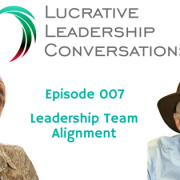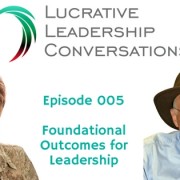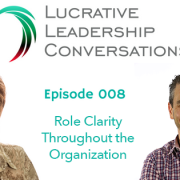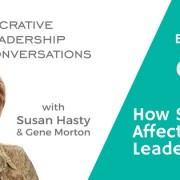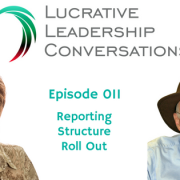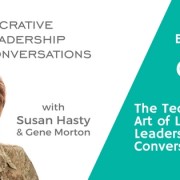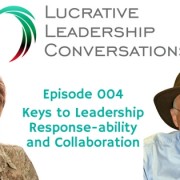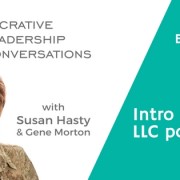010 | Designing the Leadership Reporting Structure
We have been moving through Gene Morton’s “6 Bold Steps” leaders can incorporate to improve collaboration, alignment and trust within their organizations. This week, Gene and I discuss Step 5: Designing the Leadership team reporting structure around the defined outcomes explained in previous episodes. (You can listen here and here and here.)
Traditional Reporting structures typically show the individual titles held by the leadership team members. As a result, this default model, in effect, inhibits collaboration and reinforces “silo” based decisions, behaviors and results.
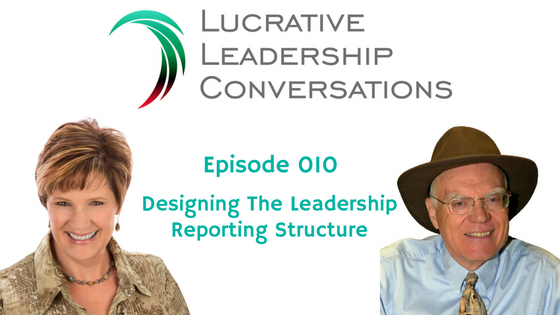 WHY AN OUTCOME-BASED LEADERSHIP REPORTING STRUCTURE IS FOUNDATIONAL
WHY AN OUTCOME-BASED LEADERSHIP REPORTING STRUCTURE IS FOUNDATIONAL
The increased Information overload faced today is proving to be toxic to personal and interpersonal communications and performance. Designing the leadership reporting structure around agreed upon and co-created outcomes empowers leaders to “lead together”, adding clarity to how they interact effectively on a daily basis.
Leaders with a common language around the critical priorities adds focus & clarifies accountability, resulting in greater commitment to what really matters. Therefore, people better understand the distribution of authority for the delivery of what the company must do to retain its customers. As Gene says; “When the barns on fire, it’s too late to call a safety meeting”.
Having predefined lines of communication reduces gaps and overlaps and reduces unnecessary meetings and drama. Dispute resolution is streamlined and contained to only those that truly need to be involved.
HOW AN EFFECTIVE LEADERSHIP STRUCTURE IMPACTS THE ENTIRE ORGANIZATION
When the leadership team collaborates effectively, it provides employees with the freedom to work in their area and make proper decisions. Also, it empowers networks within an organization to achieve the critical outcomes of the company. Finally, It provides clarity for new employees and clients and establishes expectations, reducing onboarding time and improves their integration into the new culture.
EFFECTIVE LEADERSHIP STRUCTURES ARE UNIQUE
Creating the leadership reporting structure is an intuitive and creative process. It is much more like creating a piece of art rather than a step-by-step linear process. Most of all, the leadership team reporting structure is a living document that should evolve with the marketplace and strategy.
“There is not any “one size fits all copycat” reporting structure that works for many different organizations. The best reporting structures are those designed to best fit the contingencies, vision, and outcomes of each organization. It may be a mix of matrix, hierarchy, communal, product/service line, or project oriented structure. Be sure to design your structure so it best fits your organization’s needs, requirements, and strategic vision.” -Gene Morton
A Breakdown of Today’s Episode:
- The difference between a leadership structure and the reporting structure.
- Signs of a dysfunctional or outmoded structure, such as leaders in constant conflict.
- How a company’s reporting structure affects every area of the organization
- Gene’s advice on how to collaboratively design an effective reporting structure.
- How reporting structure can help people understand the lateral relationships they must honor to meet the company’s outcomes.
- How the leadership team designs the leadership structure and how it is a collaborative and creative process.
Today’s Takeaway:
- An effective reporting structure helps to remove the silos with an organization. Reporting structure empowers networks within an organization to achieve the critical outcomes of the company.
- Each reporting structure is designed to empower the accountable leaders and their outcome delivery team to deliver the outcomes in such a way to promote customer loyalty.
- The reporting structure needs to reinforce the strategic vision and priorities of the organization.
In next week’s episode, Gene shares his recommendations for how to best roll out the leadership structure to the rest of the organization and the importance of feedback to help finalize a structure that has buy-in from the entire organization. Stay Tuned!
Helpful Links & Resources:
- Gene’s book: Leaders First: 6 Bold Steps to Sustain Breakthroughs in Construction
- Participate in the conversation by joining our Linkedin group here.
About the Hosts:
SUSAN HASTY

Susan Hasty is the CEO of 360 Profit Masters and the host of the Lucrative Leadership Conversations podcast. Susan considers herself a “maverick leader” on a mission to inspire and equip leaders to ignite their leadership genius. Susan co-founded 7 business ventures over the last 35 years. Her passion is helping business owners and CEOs improve their own clarity, focus and commitment to build more sustainable organizations empowered to make economic liberty a reality. She is certified in Neurolinguistic Programming and is a Strategic HR Business Partner by the Human Capital Institute. She is a member of the Marshall Goldsmith Stakeholder Centered Coaching Network of International Leadership coaches.
Ready to your business more profitable? Schedule a free call with Susan Hasty
GENE MORTON
 Gene Morton is an organizational psychologist based out of Colorado. He is also an award winning author of the book, Leaders First: Six Bold Steps to Sustain Breakthroughs in Construction. Over the past 40 years, Gene has consulted on more than 100 projects in 85 organizations with leader groups engaged in complex mergers, reorganizations, leadership turnarounds, and system redesigns.
Gene Morton is an organizational psychologist based out of Colorado. He is also an award winning author of the book, Leaders First: Six Bold Steps to Sustain Breakthroughs in Construction. Over the past 40 years, Gene has consulted on more than 100 projects in 85 organizations with leader groups engaged in complex mergers, reorganizations, leadership turnarounds, and system redesigns.
He developed the Leaders First Alignment Process to provide leadership teams the model they need to gain clarity as the organization evolves. His passion is mastering the complexities of organized and collaborative leadership.
Connect With Us
Subscribe to itunes Subscribe to stitcher Subscribe to Google Play
Straight forward leadership advice
Learn a simpler, more practical approach to building your leadership team strength... Delivered straight to your inbox!

